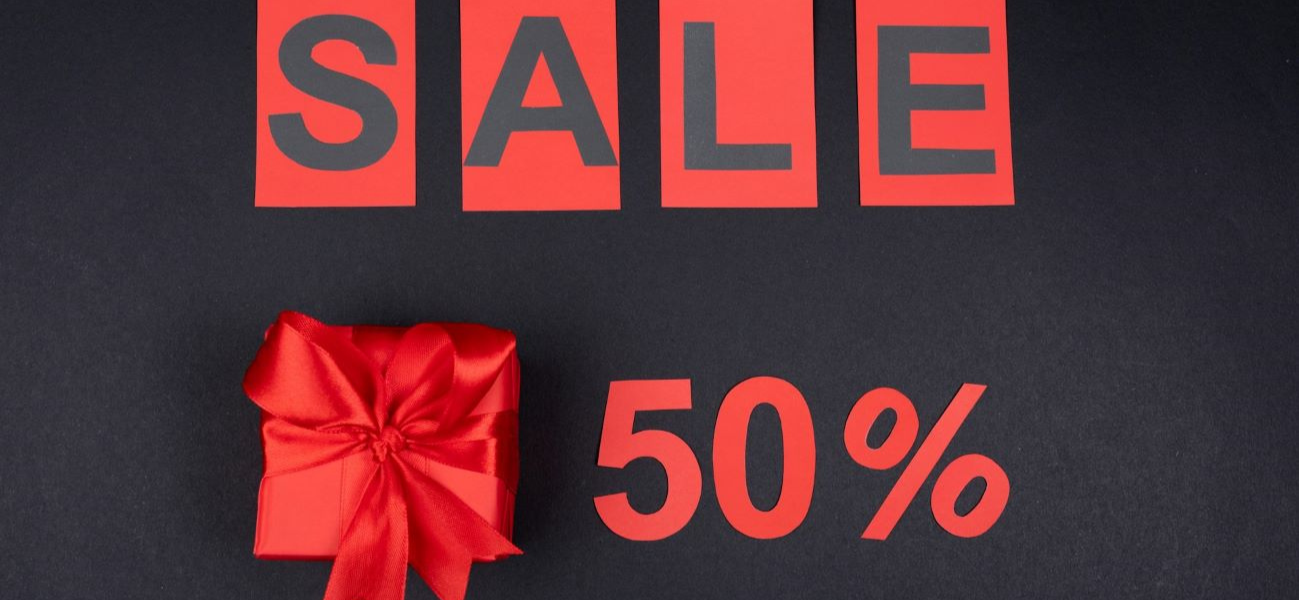September may technically be known as the ‘Back To School’ month but for retailers and e-tailers, it’s also the kicking off point for the busiest – and most important – part of the year. Holiday shopping season.
New research conducted by American Express has found that around 30% of adults had started their seasonal shopping by September with the majority buying gifts, wrapping paper and associated items, cards and décor.
A total of £1.7 billion has already been spent on festive essentials even though we’re only just in mid-September, but there’s still plenty more shopping to be done. Festive deals and special offers will be key this year the credit card company says, as households grapple with higher inflation and the increased cost of living.
So, what action do you need to take to prepare your website and ad campaigns for the upcoming rush?
1. Finalise your special offers and festive deals
According to Numerator’s 2023 Holiday Insights Survey the vast majority of shoppers will look to buy items that are on sale. That means you’ll need to be very clear on your promotional offers and special deals in order to attract cost-conscious consumers.
Remember that this year’s festive season may be slightly different to previous years, because this is the first year that the soaring cost of living has been felt. 12 months of price rises have left many households counting every penny so you may have to revise some of your tried-and-tested discounts to compensate for that extra level of caution.
If you aren’t sure, consider running a few test promotions and gathering data before the run up. A second Amazon Prime Day will take place at the start of October which could be a good testing ground. You can also run A/B tests on paid search and email marketing. Consider playing around with percentage discounts on offer, along with incentives such as free gifts, complimentary gift wrapping, bundle deals and free or faster postage.
With budget being even more of a factor this year, remember than many families may well plan to stretch out their purchases over a longer period. With that in mind, it’s advisable to begin rolling out your deals earlier than you usually would.
2. Plan to include social media
The explosive growth of Threads earlier this summer proves that there’s no dimming of enthusiasm for social media. In fact, research shows that the popularity of this channel is actually growing when it comes to consumer research and product discovery.
According to data gathered by HubSpot’s Consumer Trends Report, social shopping is booming in popularity across every single age group in 2023. Within the last three months, 41% of consumers say they have discovered a new product via a social network. What’s more, three different groups (Millennials, Gen Z and Gen X) say they favour social media for product discovery. The proportion of shoppers buying through social media directly, and purchasing as a result of influencer marketing, is also on the rise.
With that said, it’s important to think about how you can leverage social media to drive sales. The first step is to have a documented and robust social media strategy. If you don’t already have an active social community, social media advertising is a good way to tap into this potential and drive holiday sales.
You’ll want to share product information, seasonal discounts and offers in a range of formats to be successful. Plan to share in-feed posts, Stories and Reels. When it comes to in-feed, carousel posts are known to generate the most engagement and posts which feature a mix of video and images also do well.
3. Get your creative ready to go
Running a seasonal campaign is no small feat. You’ll be juggling lots of different channels, formats, and budgets in what is already a busy period. To lessen the load, and ensure you don’t miss an opportunity for sales, get all your creative ready ahead of time. Whether that’s arranging a festive-themed photo shoot for your products or having your banner adverts and Christmas social media imagery created and signed off, the time to brief your graphic designer and photographer is now.
Get as much done in advance as you can so social media posts can be scheduled well ahead of time, ad creative can be approved and loaded up and emails can be drafted and set to send a little later.
4. Don’t overlook the power of video content
92% of marketers say that video content provides a positive ROI making it an important part of your pre-holiday shopping prep list. This type of content is perhaps more crucial in the run up to the festive season than at any other time of the year. That’s because video can bring products to life on the screen, giving shoppers a much clearer idea of the product and characteristics such as size, quality, function, and operation, than images or text alone can convey. It should come as no surprise then to learn that 89% of shoppers have been convinced to buy a product specifically because of a video.
Video is also known to improve user engagement so in addition to being a tool that can directly create sales, it can also be used to bring shoppers closer to your brand, so you’re front of mind, ahead of the crucial festive shopping period.
Your videos don’t have to be too long to be effective. Short form content can be just as powerful and is ideal for sharing on landing pages, product pages and across social media.
5. Review your cart abandonment notifications
Today’s shoppers are busy, they research extensively (partly due to the budget concerns we saw above), use multiple devices and will compare multiple brands and products after crowdsourcing opinions. That means not everyone will buy right away and you may see a spike in your cart abandonment rate as traffic increases in the build up to the festive season.
To ensure that you convert as many shoppers as possible, now is a great time to revisit your cart abandonment emails. Ensure that they are active and working as expected first of all, and then consider how you can make the content as compelling as possible. Try experimenting with different offers and incentives along with various headlines and text to see what performs best.
6. Test your page load speed
Page load speed isn’t just an SEO factor – it’s a core consideration for shoppers. A slow loading page is much more likely to see high bounce rates and cost you the potential for a sale than one that loads quickly. Run page load speed tests across multiple devices to ensure that your pages are loading up quickly. This is also a good time to test any third-party integrations and plug-ins to ensure they aren’t slowing down your site or causing any issues with page loading and checkout that you weren’t aware of.
7. Prep your festive paid search campaigns
Whether you’re a year-round paid search advertiser or not, use this period before the main shopping rush kicks off to get your festive campaigns in order. That means creating your seasonal campaigns, performing keyword research, refining targeting, writing festive ad text, as well as refining bidding, loading up your promotions and setting up any special festive landing pages to funnel ad clicks through to.
If you’d like expert guidance to optimise this festive period for your business, get in touch to find out more about how we can help.


